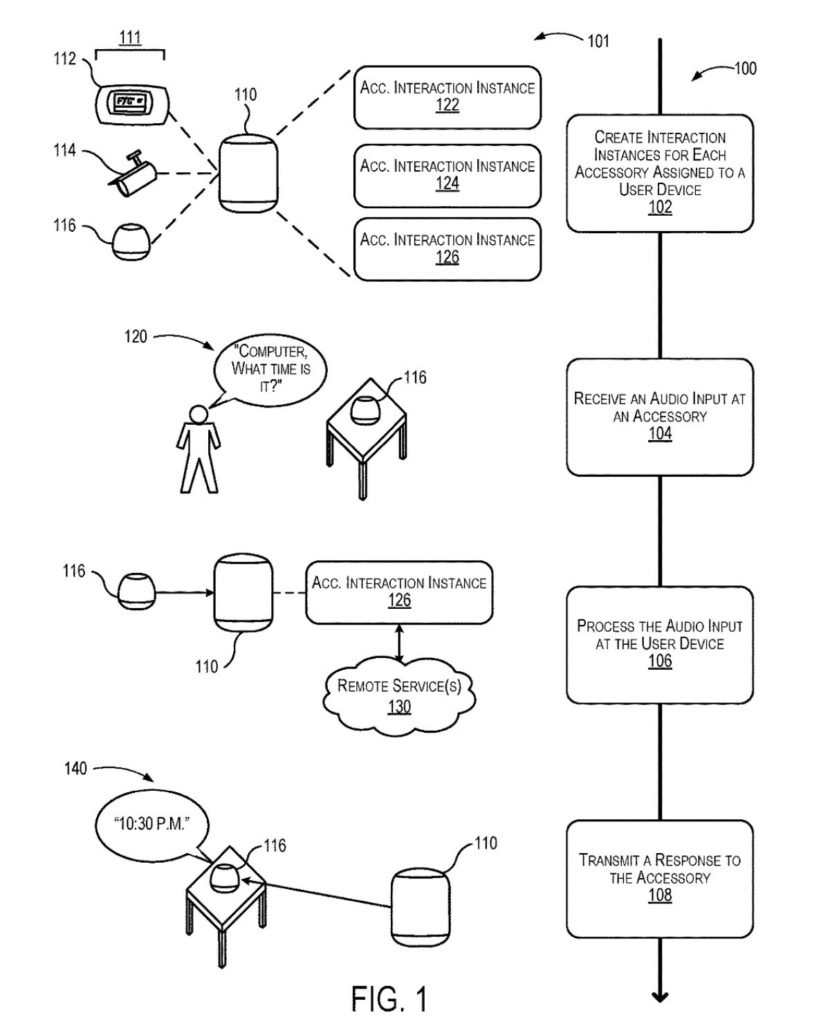Apple has filed for a patent (number 20220335938) for “techniques for communication between a hub device and multiple endpoints.” It involves using an Apple device such as a HomePod mini as a HomeKit smart home control hub.
Background of the patent
HomeKit is the software framework by Apple that lets users configure, communicate with, and control smart-home appliances using Apple devices. It provides users with a way to automatically discover such devices and configure them.
In the patent filing, Apple notes that tchniques exist for multiple user devices in a home environment to communicate among the multiple devices. For example, a user can interact with a device that provides a digital assistant program (think Siri). This device, via the digital assistant, can communicate with other devices to perform requests from the user, including controlling smart accessory devices such as light switches, speakers, and thermostats.
However, Apple says that controlling smart device functionality has continued challenges. A user may not have direct access to a user device with a digital assistant to provide the desired interaction. Accessory devices can have many different features and capabilities and are produced by various manufacturers.
In a home environment, a user may want to interact with accessories by voice command in the same manner as they would interact with a user device with a device assistant. Apple wants to enhance HomeKit overcome such issues.
Summary of the patent
Here’s Apple’s abstract of the patent filing: Techniques are disclosed for coordinating interactions between a user device and a plurality of accessory devices. In one example, a user device receives information identifying one or more accessory devices in communication with the user device. The user device may implement accessory interaction instances for each of the identified accessories. A first accessory interaction instance can be associated with a first accessory among the identified accessories and receive a first audio input from the first accessory corresponding to a user request. The first accessory interaction instance can process a portion of the received audio input and receive a first response from a server computer. The user device may then transmit the first response to the first accessory device.
Article provided with permission from AppleWorld.Today

